#Islay Mist
Explore tagged Tumblr posts
Text
Islay Mist 8 Year
Review by: The Muskox Islay whisky is unique. Once you catch the bug, you may not want to drink anything else. The problem with this (aside from missing out on all the gloriousness of unpeated whisky) is that Islay malts are getting more expensive by the day. If you need the peat but don’t want to pay single malt, is there any hope at a lower price range? Islay Mist has been around as a brand…

View On WordPress
0 notes
Text

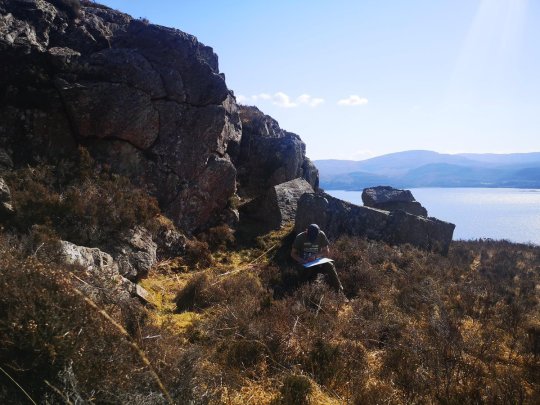
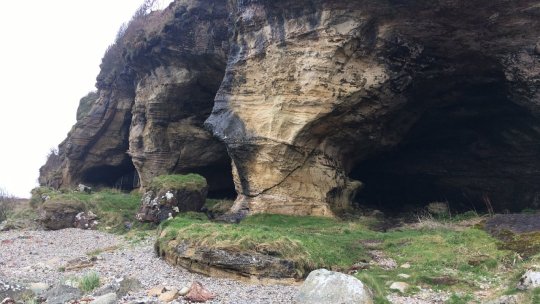
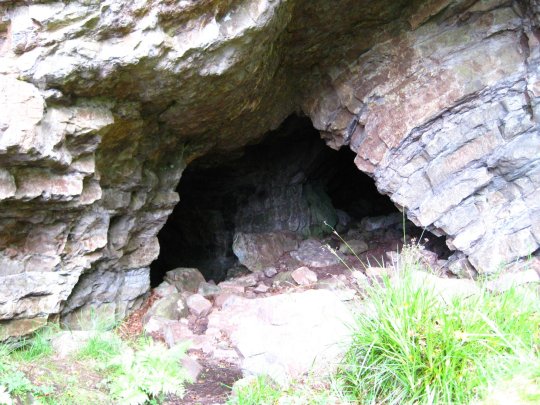
On January 29th 1852 smugglers caves and bothies on Arran, numbering about a dozen, were discovered and demolished by revenue men.
Whisky was outlawed in Scotland for around 40 years in the late 18th and early 19th centuries after its growing popularity drew the beady eyes of the government, who wanted to benefit from its manufacture. But it created a huge backlash of underground smuggling, with families, women and children all involved in exporting the drink.
Soon after the government became aware of whisky’s increasing popularity, they attempted to control production and of course benefit financially by introducing tax on spirits, this led to an incentive to illicitly sell the produce of small private stills. The government then responded to this by outlawing private distilling completely in 1781. Overnight, distilling went from ‘private,’ to ‘illicit.'
Illicit distilling and smuggling were prevalent throughout Scotland but the activities were mainly associated with the Highlands. Speyside, Campbeltown and Islay were also hot-beds of illicit production but Arran, one of the main players in whisky export at the time, had been completely overlooked, until now.
After whisky was again made legal in the 1823 Excise Act, Arran was unable to transition from illicit to legal production due to its lack of infrastructure, which may suggest why it has been overlooked. The illicit distilling and smuggling formed a critical part of the island’s economy, ensuring rent payments and guaranteeing employment on the island. It was noted by a Kilmory minister (a village in Arran’s south end) that there were ‘”Few, if any, in the parish, who, at some period of their lives, were not engaged in some department of smuggling.”
One notable incident that involved a number of these Arran smugglers includes three islanders murdered by authorities in the name of illegal whisky export.
William and Donald McKinnon (father and son) and Isobel Nicol, were shot and killed by a heavily armed Excise crew near Shannochie in Arran’s south end.
The commander of the Excise party, John Jeffrey, was tried for murder at the High Court in Edinburgh and found not guilty despite opening fire on a group of unarmed islanders. The incident had a considerable impact on the island community and a memorial service was held near the site of the killings as late as the 1950s
A contemporary of Sir Walter Scott described illicit Arran as ‘the burgundy of all the vintages.
After 1823, the majority of illicit producers were barred from the whisky industry, lacking the finance and infrastructure to compete with large landowners and tenant farmers.
On Arran, the acts virtually wiped out whisky manufacture, and for over 150 years, the island’s illicit stills lay silent. In 1995, Arran’s first legal distillery in over a century was opened, and now, the new establishment at Lagg brings production firmly back to the traditional heartland of distilling in the south end of the island.
Illicit distilling has died out from lack of profitability, but rumours still persist in remote places of homemade moonshine like "Melvaig Mist"
Of course the troubles with the excise-man started long before the 19th century, Rabbie Burns, himself an excise-man for a time, wrote a poem, the end few lines are........
Scotland, my auld, respected mither! Tho' whiles ye moistify your leather, Till whare ye sit on craps o' heather Ye tine your dam, Freedom and whisky gang thegither, Tak aff your dram!
The pics are of caves and remains of an Illicit Still on the Isla of Arran, and how an Illicit Still would have looked.
You can read or listen to the whole poem here https://www.bbc.co.uk/.../the_authors_earnest_cry_and.../
18 notes
·
View notes
Text
Islay Mist 8 Year Old Amontillado Napoleon Finish (43%, Macduff International, 7000 bottles, 2017)
Islay Mist 8 Year Old Amontillado Napoleon Finish Whisky Review
ABV: 43%
Age: 8 Years Old
Bottling: Macduff International, Islay Mist
Category: Blended scotch whisky
Cost: £29.95
Origin: n/a
Vintage: undeclared

What they say
A limited edition of one of our favourite blended whiskies. Like all Islay Mist releases, this blended whisky uses Laphroaig as its main component along with other whiskies…
View On WordPress
#43% ABV#8 Years Old#82 points#£29.95#Blended Scotch Whisky#Islay Mist#Islay Mist 8 Year Old Amontillado Napoleon Finish#Macduff International#Whisky review
0 notes
Text
The Art of Borrowed Scenery
Can we still enjoy our private gardens—our places and practices of retreat, beauty and joy—while people suffer and the world burns? #spirituality
A medieval hortus conclusus: The Little Garden of Paradise, Upper Rhenish Master (c. 1410). Outside, the mountains have been drawn into the garden, becoming a part of it. Aritomo was a master of shakkei, the art of Borrowed Scenery, taking elements and views from outside a garden and making them integral to his creation. — Tan Twan Eng , The Garden of Evening Mists [i] The Rev. James Bramston,…

View On WordPress
#Archibald Campbell (Lord Islay)#Art of borrowed scenery#Christopher Woodward#Diana Ketchum#Diderot#Garden of Eden#Gardens#Hortus conclusus#In Ruins#Isaac Walton#James Brampton#Landscape design#Picturesque#Roy Strong#Ruins#Shakkei#Study to be quiet#Susan Stewart#Tan Twan Eng#The Garden of Evening Mists#The Ruins Lesson
1 note
·
View note
Photo



The views in Port Wemyss, Islay, are a bit limited this afternoon....
1 note
·
View note
Photo

macduff.comTartans evolve, but knees don’t: Islay Mist is inspired by the breathtaking landscapes and sunsets from one of Scotland's most iconic Hebridean Islands..Yes, really.
Source: macgregorandmacduff.co.uk
147 notes
·
View notes
Photo

Hey guys. How's it going? I have an Islay surprise for you today! 😊🥃. . As some of you know, I'm not a huge peated whisky fan, but when I first saw this Islay Mist scotch whisky I just had to try it 🙂 Lucky for me @_islaymist hooked me up and then some! They even sent me a limited launch edition sample and a peat sample as well! How cool is that? 😍🥃. . Review coming soon 😉 . How's your Monday shaping up? 🙂 Cheers!🥃✨🥃. . #whisky #whiskey #scotch #shotonsony #islay #islaywhisky #islaymist #firewaterxo #scotchwhisky #whiskyporn #whiskygram#whiskybar #bottle #drinks #apple #cluj #romania #scotland #whiskylover #cheers #drinks #singlemalt #scotchwhisky #france #paris (at Galeries Lafayette) https://www.instagram.com/p/B2enn_VHz0G/?igshid=tswsfduovtmq
#whisky#whiskey#scotch#shotonsony#islay#islaywhisky#islaymist#firewaterxo#scotchwhisky#whiskyporn#whiskygram#whiskybar#bottle#drinks#apple#cluj#romania#scotland#whiskylover#cheers#singlemalt#france#paris
9 notes
·
View notes
Link
Guidance: Contains images some may find distressing.
It is the whisky-making Scottish island, world famous for its peaty single malts and warm hospitality.
But the isle of Islay, in the Inner Hebrides, is now being recognised for an almost forgotten example of huge courage and humanity.
A hundred years ago, Islay was on the frontline in the battle at sea during World War One.The island coped with mass casualties from two major troopship disasters just eight months apart.

Between them, the sinkings of the SS Tuscania in February and HMS Otranto in October, claimed the lives of about 700 men in the last year of the war.
Both will be officially commemorated on Islay this week.
A century ago, the island was enduring considerable pain. It had already lost about 150 sons on the Western front, from a population of just 6,000. Every household grieved for someone killed in a far away field. And then the carnage of war came to them.
The Tuscania had almost completed its transatlantic voyage, carrying US troops, among a convoy of ships. As it turned into the north channel between Scotland and Ireland on 5 February 1918, danger lurked beneath the waves.
A German U-boat stalked the convoy, got the Tuscania in its sights and fired two torpedoes - one of which ripped a huge gash in its side. It was a fatal blow. The former luxury liner, converted for the war effort, would soon be on the seabed.
The Tuscania was carrying almost 2,500 US soldiers and British crew. Incredibly, most were rescued by the Royal Navy. But some of those who made it into lifeboats were not so lucky. They were swept towards the cliffs and rocks of Islay's Oa peninsula and shipwrecked for a second time.
Private Arthur Siplon was thrown into the sea when his lifeboat capsized.
"He thought he was going to die," his youngest son Bob told me.
"But at last he grabbed hold of a rock and when the sea receded he managed to hang on and climbed to the shore."
Private Siplon was rescued by one of two Islay farmers who risked their own lives pulling men to safety.
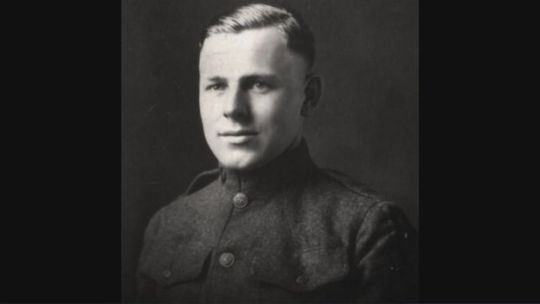
Pictured - Arthur Sipton
Robert Morrison and Duncan Campbell gave food and shelter to dozens of survivors and were later awarded the OBE.
Bob Siplon knows that he and his family would not exist if his father had not found help on Islay.
"It's like the actions of those people 100 years ago ripples through time to affect me 100 years later.
"It tells me that what we do makes a difference" he said.
This was a massive disaster for a small island to manage. In 1918, Islay had no electricity, no air service and few motor vehicles.

The funeral on Islay of 199 American soldiers who were victims of the Ontranto disaster
The civil authority on this almost crime-free island was a police sergeant on a bicycle, called Malcolm MacNeill. Sgt MacNeill and his three constables had to recover, identify and bury the remains of almost 200.
His grandson - former Nato secretary general, Lord Robertson - considers their task on a scale comparable with recent terrorist attacks.
"This is like Lockerbie (air disaster) or 7/7 or even 9/11 occurring in a small community.
"A huge event taking place with deaths, bodies, survivors - the calamity that was involved".
Despite their trauma, the islanders worked tirelessly to bury the dead with dignity.
They did not have an American flag for the funerals, so a small group of locals hand-stitched one from the materials they had - working late into the night.
That flag has been preserved by the Smithsonian Institution in Washington DC, which is sending it home on loan to Islay for the centenary.

The Smithsonian's Jennifer Jones is impressed by the care the islanders showed for the American soldiers washed up on their shores.
"It was very heartfelt, that people went out of their way to respect those who had recently lost their lives" she said.
Islanders pulled together to respond to the Tuscania sinking.
What they could not know is that this was only a preparation for a much bigger disaster to come.
Like the Tuscania, HMS Otranto was carrying US troops across the Atlantic in a convoy when disaster struck.
But it wasn't an act of war that sank the Otranto on 6 October 1918, within weeks of the armistice. It was a navigational error in a storm.
As the convoy approached the west coast of Scotland in near hurricane conditions, there was confusion over their exact position.
The Otranto was rammed by another ship in the convoy - HMS Kashmir - which ripped its steel hull wide open.
The Kashmir and the rest of the convoy sailed on, under orders not to give assistance for fear of U-boat attack.
Despite the ferocious weather, the Royal Navy destroyer, HMS Mounsey came to the rescue under the command of Lieutenant Francis Craven.
"In my viewpoint, Captain Craven was a real hero. Perhaps the real hero of the event" said Chuck Freedman, whose grandfather, Sam Levy, was on the Otranto.
Lieutenant Levy was among almost 600 soldiers who successfully jumped for their lives on to the deck of the Mounsey.

Funeral for the victims of the Ontranto at Kilchoman on Islay
Many others tried and failed and were crushed to death between the two ships. By the time the Mounsey left the scene there were still hundreds of men aboard the sinking Otranto.
Their best hope was to be swept towards one of the beaches on Islay's Atlantic coast. But that wasn't to be.

The Otranto was lifted by a huge wave and dumped down onto a reef that broke its back and tore the ship to pieces.
Only 21 men made it ashore alive.
Some were pulled from the sea by members of Donald-James McPhee's family.
They were shepherds and used their crooks to reach survivors - the length of their staffs, the distance between life and death.
But this was largely a recovery operation with bodies piling up along the coast.

"It must have been so sad for them to see that" said Mr McPhee.
"Waking up in the morning to a normal day's work and hundreds of dead bodies by the evening. It must have been horrendous."
Sergeant MacNeill painstakingly recorded the details of every body washed ashore, in a notebook which now has pride of place in the Museum of Islay life.
Many of the victims were from the US state of Georgia, which is planning its own commemorations later this year.
Some of the 700 victims of the Otranto and Tuscania disasters were never found.
The majority were buried on Islay.
After the war, the remains of the American soldiers were exhumed and returned home.
In 1918, the Tuscania disaster represented the biggest single loss of US military lives since the American civil war. The sinking of the Otranto accounted for some of America's heaviest losses at sea during the 1914-18 war. Yet the stories of these ships are not well known - lost perhaps in a century of Islay mist.
There is a large lighthouse-shaped memorial on Islay's bleak Mull of Oa.
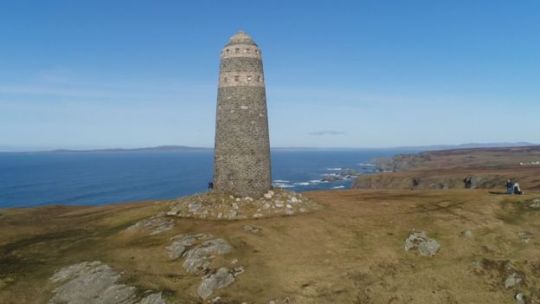
But when I was growing up on the island, the troopships were rarely talked about. That's changing. Today, every child at my old school - Bowmore primary - is learning about them.
On Friday 4 May, Princess Anne will lead commemorations on Islay to mark the centenary of these twin tragedies. These events will honour those who lost their lives and honour what the people of Islay did for those in peril on their shores a hundred years ago.
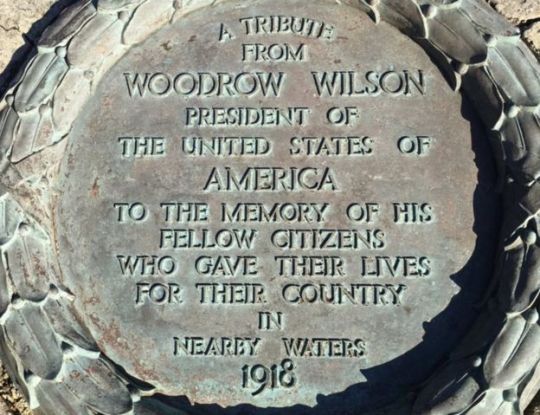
311 notes
·
View notes
Photo

Islay rising out of the mist...Kintyre, Scotland [2268x4032][OC] via /r/EarthPorn https://ift.tt/37X6fhv
0 notes
Photo

Smoking a Lithium by Jack Wyatt paired with the Oppidan Smoke + Sea a bourbon finished in French Oak and Islay Scotch barrels. The whiskey has definitely picked up some of the sea salt and peat flavors from the Islay barrel. .... "To stand at the edge of the sea, to sense the ebb and flow of the tides, to feel the breath of a mist moving over a great salt marsh, to watch the flight of shore birds that have swept up and down the surf lines of the continents for untold thousands of years, to see the running of the old eels and the young shad to the sea, is to have knowledge of things that are as nearly eternal as any earthly life can be." ~ Rachel Carson .... #cigar #CigarLover #CigarAfficionado #cigarphoto #cigarsnob #cigarlife #cigarsmoke #jackwyattcigars #privadacigarclub #cigarsandwhiskey #sailorandsticks #TapThatAsh #whiskey #bourbon #barrelfinished #oppidanspirits #whiskeylife #WhiskeyLover #whiskeyphoto #WhiskeyNeat #WhiskeyAfficionado #whiskeygram #quote #quotestagram (at Coastal San Pedro) https://www.instagram.com/p/CQpcpA7MPUb/?utm_medium=tumblr
#cigar#cigarlover#cigarafficionado#cigarphoto#cigarsnob#cigarlife#cigarsmoke#jackwyattcigars#privadacigarclub#cigarsandwhiskey#sailorandsticks#tapthatash#whiskey#bourbon#barrelfinished#oppidanspirits#whiskeylife#whiskeylover#whiskeyphoto#whiskeyneat#whiskeyafficionado#whiskeygram#quote#quotestagram
0 notes
Photo





On January 29th 1852 smugglers caves and bothies on Arran, numbering about a dozen, were discovered and demolished by revenue men.
Whisky was outlawed in Scotland for around 40 years in the late 18th and early 19th centuries after its growing popularity drew the beady eyes of the government, who wanted to benefit from its manufacture. But it created a huge backlash of underground smuggling, with families, women and children all involved in exporting the drink.
Soon after the government became aware of whisky’s increasing popularity, they attempted to control production and of course benefit financially by introducing tax on spirits, this led to an incentive to illicitly sell the produce of small private stills. The government then responded to this by outlawing private distilling completely in 1781. Overnight, distilling went from ‘private,’ to ‘illicit.'
Illicit distilling and smuggling were prevalent throughout Scotland but the activities were mainly associated with the Highlands. Speyside, Campbeltown and Islay were also hot-beds of illicit production but Arran, one of the main players in whisky export at the time, had been completely overlooked, until now.
After whisky was again made legal in the 1823 Excise Act, Arran was unable to transition from illicit to legal production due to its lack of infrastructure, which may suggest why it has been overlooked. The illicit distilling and smuggling formed a critical part of the island’s economy, ensuring rent payments and guaranteeing employment on the island. It was noted by a Kilmory minister (a village in Arran’s south end) that there were ‘”Few, if any, in the parish, who, at some period of their lives, were not engaged in some department of smuggling.”
One notable incident that involved a number of these Arran smugglers includes three islanders murdered by authorities in the name of illegal whisky export.
William and Donald McKinnon (father and son) and Isobel Nicol, were shot and killed by a heavily armed Excise crew near Shannochie in Arran’s south end.
The commander of the Excise party, John Jeffrey, was tried for murder at the High Court in Edinburgh and found not guilty despite opening fire on a group of unarmed islanders. The incident had a considerable impact on the island community and a memorial service was held near the site of the killings as late as the 1950s
A contemporary of Sir Walter Scott described illicit Arran as ‘the burgundy of all the vintages.
After 1823, the majority of illicit producers were barred from the whisky industry, lacking the finance and infrastructure to compete with large landowners and tenant farmers.
On Arran, the acts virtually wiped out whisky manufacture, and for over 150 years, the island’s illicit stills lay silent. In 1995, Arran’s first legal distillery in over a century was opened, and now, the new establishment at Lagg brings production firmly back to the traditional heartland of distilling in the south end of the island.
Illicit distilling has died out from lack of profitability, but rumours still persist in remote places of homemade moonshine like "Melvaig Mist"
Of course the troubles with the excise-man started long before the 19th century, Rabbie Burns, himself an excise-man for a time, wrote a poem, the end few lines are........
Scotland, my auld, respected mither! Tho' whiles ye moistify your leather, Till whare ye sit on craps o' heather Ye tine your dam, Freedom and whisky gang thegither, Tak aff your dram!
The pics are of caves and remains of an Illicit Still on the Isla of Arran, and how an Illicit Still would have looked.
You can read or listen to the whole poem here https://www.bbc.co.uk/arts/robertburns/works/the_authors_earnest_cry_and_prayer/
165 notes
·
View notes
Photo

Daily MCO Drink #338, MCO Day #340: SOUTH BY SOUTHWEST, made with equal parts Ardbeg Uigeadail, Campari and Cinzano 1757 Rosso vermouth, stirred over ice and strained over an ice block, with a mist of orange blossom water. Another smoky Scotch twist on the negroni, but this time closer to the original than the Negroni Torbato. This one is created by bartender Benny McKew. I was curious to try this after the Torbato just to see whether the Negroni works with just switching out the gin for smoky Scotch. While it is still a pretty tasty drink, it doesn’t have the satisfying complexity and multi-dimensional flavours of the Negroni Torbato. The Campar’s bitterness and the sweetness of the vermouth overpowers whatever subtle flavours the Ardbeg has, leaving just the rich smokiness behind. #negroni #negronitwist #cocktails #islaymalt #islay #ardbeg #ardbeguigeadail #whisky #whiskey #scotch #singlemalt #campari #cinzano #cinzano1757 mytipsyturvy #tipsyturvywhisky #tipsyturvycocktails #cocktails #dailyMCOdrink https://www.instagram.com/p/CLgrLdGJCF0/?igshid=1i2xkrurblbyr
#338#340#negroni#negronitwist#cocktails#islaymalt#islay#ardbeg#ardbeguigeadail#whisky#whiskey#scotch#singlemalt#campari#cinzano#cinzano1757#tipsyturvywhisky#tipsyturvycocktails#dailymcodrink
0 notes
Text
5th Annual Waterscapes Art Exhibition – October 2020 | Fusion Art

5th Annual Waterscapes Art Exhibition – October 2020
Welcome to Fusion Art’s 5th Annual Waterscapes International Online Juried Art Exhibition for the month of October 2020.
For this competition, both 2D and 3D artists were encouraged to share their best art and photography depicting waterscapes. All artists, over the age of 18, regardless of location or experience, were encouraged to submit their best work in any media.
We once again received a diverse collection of quality artwork from artists all around the world, including the US, Canada, United Kingdom, Australia, Germany, China, Russia, Argentina, Hong Kong, Uruguay, Israel, Italy, New Zealand, Portugal and Denmark. Overall, the gallery judged 419 entries for the exhibition, which will be featured on the website for the month of October.
In this monthly themed exhibition, Fusion Art presents awards in three categories: Traditional Art, Photography & Digital Art, and 3-Dimensional Art. The Waterscapes Best in Show winners are Jan Kornegay Dappen for her oil painting, “Reflections at Lake Louise”, John Diephouse for his photograph, “Lake Superior Stillness” and Michele Bourdeau for her bonded bronze, “Wave”.
Best in Show (Traditional) Jan Kornegay Dappen
"Reflections at Lake Louise" oil Website
Best in Show (3-Dimensional) Michele Bourdeau
“Wave” bonded bronze Email
Jan, John and Michele are Fusion Art’s Featured Artists for the month of October 2020 and, as the Best in Show winners, all three artists are invited to participate in Fusion Art’s 5th Annual Group Show in Palm Springs, tentatively scheduled for March 2021.
Below are the top winning artists in the Traditional Art, Photography & Digital Art and 3-Dimensional categories. Please visit the Monthly Winners Page to learn more about each of these award-winning artists and/or to contact them directly about their work.
2nd Place (Traditional) Raymond Smith
2nd Place (Photography & Digital) Felix Rivero
"Calm" oil on canvas Website
3rd Place (Photography & Digital) Francesco Lombardi
“The Old Robot and the Sea” mixed media wall sculpture Website
"Islay Mist" oil on canvas Website
"Sunset under the Bridge" digital photography Website
“The Head” alcohol ink, duralar, resin on wood panel Website
"Duck Dive" oil on panel Website
5th Place (Photography & Digital) Paul M. Murray
"A Lucy Vincent Sunrise" color photography Website
5th Place (3-Dimensional) Chiara Vincenzi
“Sea View from an Imaginary Window” textile Email
In addition, this month, twelve honorable mention awards are given as special recognition due to the exceptional quality of the art received for this competition.
Honorable Mention (Traditional) Merritt Richardson
"Cascada" acrylic painting Website
"Beach Dayz" oil on canvas Website
"Arctic Aborg preparing for a summer in the Arctic" oil Email
Honorable Mention (Traditional) Sylvia Audet
"L'eau notre grande richesse" acrylic Website
Honorable Mention (Photography & Digital) Diane Lamboley
Honorable Mention (Photography & Digital) Kelsey Fein
Honorable Mention (Photography & Digital) Francis O’Donnell
Honorable Mention (Photography & Digital) Barbara Mierau-Klein
"Sailboat Sunset" digital photo collage Website
Honorable Mention (Photography & Digital) Rosemary Miklitsch
"Moonrise" color photography Website
Honorable Mention (Photography & Digital) Daniel Inacio
"Unusual Sunset" photography Website
The remaining finalists in the exhibition all exemplify uniquely creative talents and we’re honored to showcase their artwork on the Fusion Art website.
Fusion Art strives to create interesting and enjoyable art exhibitions with a variety of artistic styles and media represented. The art that is selected is based on the theme of the exhibition and the gallery’s objective is to include, in every Fusion Art exhibition, a broad representation of quality, style, media, creativity, originality and artistic composition. Art tells a story and we strive to select artwork, particularly for awards, that make the viewers think and wonder what story the artist is trying to tell.
As always, we’d like to take this opportunity to thank all the competition participants. While not all the artwork that was submitted was selected for inclusion in the exhibition this in not necessarily a reflection on any one artist’s talent and/or skill. It takes courage for artists to offer up one’s art up for critique by others and all the artists should be applauded for their efforts. We appreciate all of you sharing your extraordinary talent with us.
For anyone interested in purchasing any of the artwork in this exhibition, please contact the artists directly. You will find the artist’s website and/or email information below their work.
Please visit our YouTube Archives or our YouTube Channel to see the Traditional and 3-Dimensional and Photography & Digital videos for the exhibition.
Thank you for visiting our website and enjoy the exhibition!
Click the Thumbnail Image Below to See the Artwork in a Lightbox
Barbara McElheny
David Jacobson
Hugo Martínez Rapari
Hugo Martínez Rapari
This content was originally published here.
0 notes
Photo

Islay Mist Peated Reserve Blended Scotch Whisky 70cl / 40% - The no-age-statement Peated Reserve release of Islay Mist, an Islay-led blended whisky, tempering the smokiness of the island malts with whisky from the mainland. The brand takes inspiration from the special blend served at the first Lord Margadale's 21st birthday in the 1920s.
0 notes
Photo

Highland cattle grazing on the coast of Islay near the American Monument #scotland #islay #coast #highlandcow #mist — view on Instagram http://bit.ly/2mgamjX
0 notes
Text
A young Scottish pianist marries folk with jazz

IN SCOTLAND, between the Ochil Hills and the River Devon, lies Dollar. Etymologically, the town’s name is thought to have come from dol, a Pictish word for “field”, or doilleir, a Gaelic word meaning “dark and gloomy”. They rely on music here to lift the mist, as in settlements throughout Scotland’s rugged hinterland. The tunes are often traditional folk numbers, played on fiddles, the piano, the accordion and the clarsach (bagpipes) in cosy pubs. In short, Dollar is an unlikely home for a jazz talent.
Yet Fergus McCreadie, a 22-year-old, is leading a new generation of Scottish jazz musicians. He combines swing and syncopation with ambitious improvisation, and blends these jazz elements with the splendid melodies of the sort conjured by folk players. They have the ability to bring both laughter and tears to their listeners, Mr McCreadie says, and the splendour of folk songs lies in their simplicity and conviction.
Get our daily newsletter
Upgrade your inbox and get our Daily Dispatch and Editor's Picks.
To some, Mr McCreadie thinks, jazz can sound “lame and twee”—or, worse still, “horrible and mental”. “Some jazz musicians are guilty of forgetting that the most important thing in music is the melody,” he reckons. These few notes are what people whistle on the way to work or hum in the shower, but in their pursuit of cleverness, jazz musicians can end up playing anguished cascades of notes that even they themselves do not appear to enjoy. His music is intended as a corrective, and he also hopes to capture the arresting topography of his home town. “You can take the guy out of the countryside,” he says, cringing slightly, “but you can’t take the countryside out of the guy.”
Mr McCreadie released “Turas” (Gaelic for “journey”), his debut album, in April 2018. Piano, drums and bass combine to transport listeners up crag and down misty glen, with musical flurries the like of blustery winds—one critic described it as “Erik Satie on Islay malt”. On “The Culearn Mill”, the first track, Mr McCreadie steadily builds his theme before unleashing animated solos. Many listeners would recognise the patient precision of Oscar Peterson, the “Maharaja of the keyboard”, and the airy sustain of Bill Evans; later songs demonstrate a harmonic experimentation akin to Keith Jarrett. Mr McCreadie explores the safe ground before leaping to far-away keys, a move that would sound a mess under a lesser talent. It is a technique that Tommy Smith, the founder of the Scottish National Jazz Orchestra, describes as “virtuosic and high in emotional depth”.
His fellow bandmates are attentive in their accompaniment. Sensitive percussion mirrors the rise and fall of Mr McCreadie’s musical leadership, but confidently sets the pace of the album as it makes its way from ballads to up-tempo foot-tappers. Sometimes the bass carries the melody; sometimes it lingers in the background. Each track is characterised by an appealing groove.
The relative youth of the Scottish jazz scene may explain this experimentation. London and New York have a century of convention that musicians must learn and respect; Glasgow has only offered formal training in jazz for a decade. Mr McCreadie is a recent graduate of the Royal Conservatoire of Scotland, and is part of a community that is committed and open to new ideas and influences. They appreciate each other’s musicianship and share that joy with increasingly enthusiastic audiences. Indeed, Mr McCreadie plays as a sideman in two other Scottish combos, each at opposite ends of the jazz spectrum. In the rhythm section behind Matt Carmichael, a saxophonist, his style is more that of the time-honoured session player. In Graham Costello’s collective, Strata, anything goes—from discordant bashes of the keys to muted strings.
Now Mr McCreadie is almost ready to lay down a second album and, in preparation for recording, the musician will resume his countryside hermitage. Familiar sights and sounds will move his fingertips, and lead to a collection of new compositions mostly without names (he admits to having great difficulty finding titles for his tunes, and has even resorted to Google Maps for inspiration). In recent years jazz has fused with other genres, particularly techno and electronica; that it has incorporated some Gaelic cheer is pure barry.
https://ift.tt/2YVLThw
0 notes